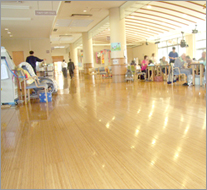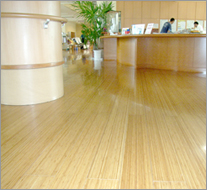Highly safe and eco-friendly
- HOME
- Highly safe and eco-friendly
Bamboo, an ecological material that protects the environment
In today’s world where traditional wood resources are declining and depleting, bamboo is attracting attention as the best material for construction because of its remarkably fast growth and extremely low environmental impact, as well as its flexibility and durability. increase.
remarkably fast growth
It takes about 40 to 60 years for coniferous trees and 150 to 200 years for broadleaf trees before they can be used as building materials, depending on the temperature and humidity at which they grow.
Bamboo, on the other hand, is a vigorous plant that grows in two to three years.
*We use products that are about 3 years old.
Absorbs 40 times more carbon dioxide than wood
Bamboo is so dense that it can live in a much higher number than trees in the same area, so even compared to genetically engineered trees, it can absorb 40 times more carbon dioxide per hectare per year. is possible.
In addition, it does not require fertilizers or pesticides for growth, requires only a small amount of nutrients, and places a small burden on the earth.
Consumption contributes to environmental conservation
In the case of general materials, using less bamboo leads to environmental conservation, but in the case of bamboo, consuming it due to its fertility leads to environmental conservation, including satoyama conservation. It is possible to keep CO2 trapped by using bamboo, which has absorbed and fixed carbon dioxide in several years, as a building material. Even if it is incinerated after use, it just goes back to the beginning and does not result in an increase in carbon dioxide from the perspective of the entire cycle, nor does it emit harmful substances such as dioxin.
Formaldehyde emission amount
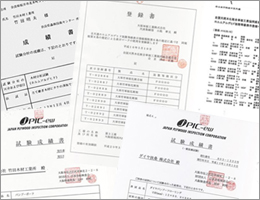
The Ministry of Agriculture, Forestry and Fisheries has established JAS standards for lumber, but bamboo, which belongs to the grass family, is not woody, so it is not subject to JAS certification. For this reason, it is legally legal to use harmful adhesives that emit a large amount of formaldehyde, which is considered to be the main cause of sick house syndrome.
We use adhesives that do not emit formaldehyde, and we conduct inspections by various specialized organizations, including the Japan Plywood Inspection Association, which is an accrediting body of the Japanese Agricultural Standards (JAS), and issue registration and inspection certificates. has proved its safety.
Formaldehyde Emission Class in all laboratories:F
- Bamboo board test results by the Japan Plywood Inspection Association (radiation amount: 0.0mg/L)
- Test results of fusuma and shoji screens by the Nara Prefectural Forest Technology Center (radiation amount: 0.0mg/L)
- Performance indication of bamboo veneer by Zentenren (radiation amount: 0.0mg/L)
- Solid flooring test results by the Japan Plywood Inspection Association (radiation amount: 0.0mg/L)
- (Foundation) Japan Plywood Inspection Association Take Kobo test results (radiation amount: 0.0mg/L)
A track record of being adopted by hospitals and nursing centers
Our bamboo materials are also used in model rooms in the Osaka Prefectural Respiratory and Allergy Center, a rehabilitation center in Tokyo, and a care house in Saga Prefecture.
Hospital in Osaka Prefecture
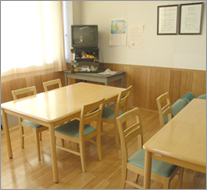
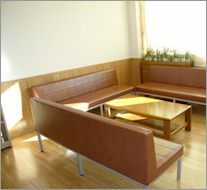
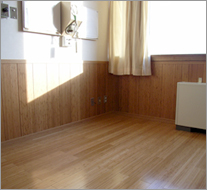
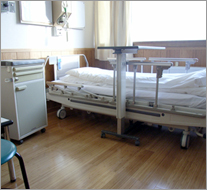
Rehabilitation center in Tokyo
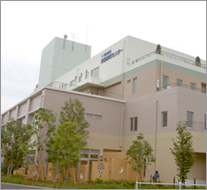
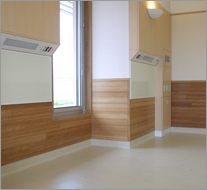
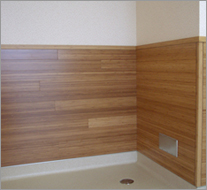
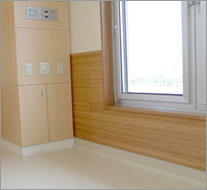
Care house in Saga
